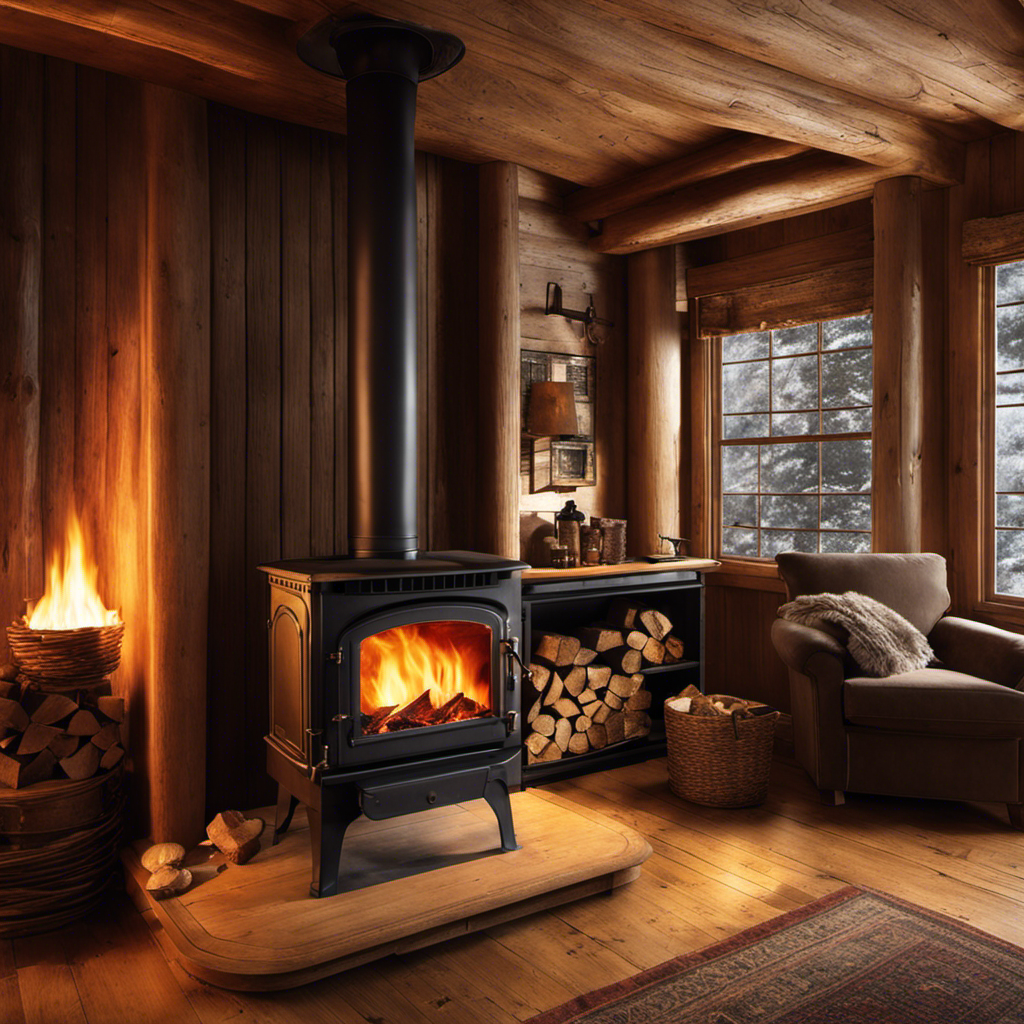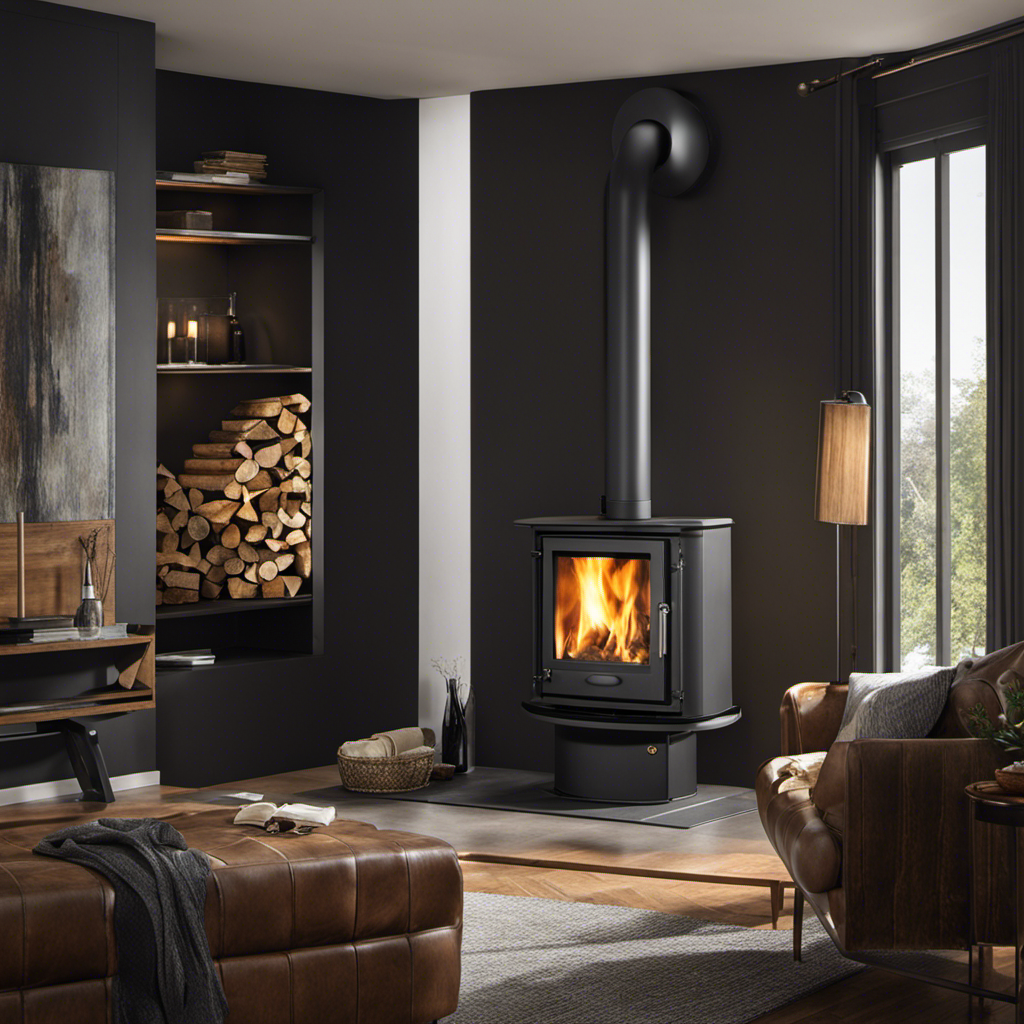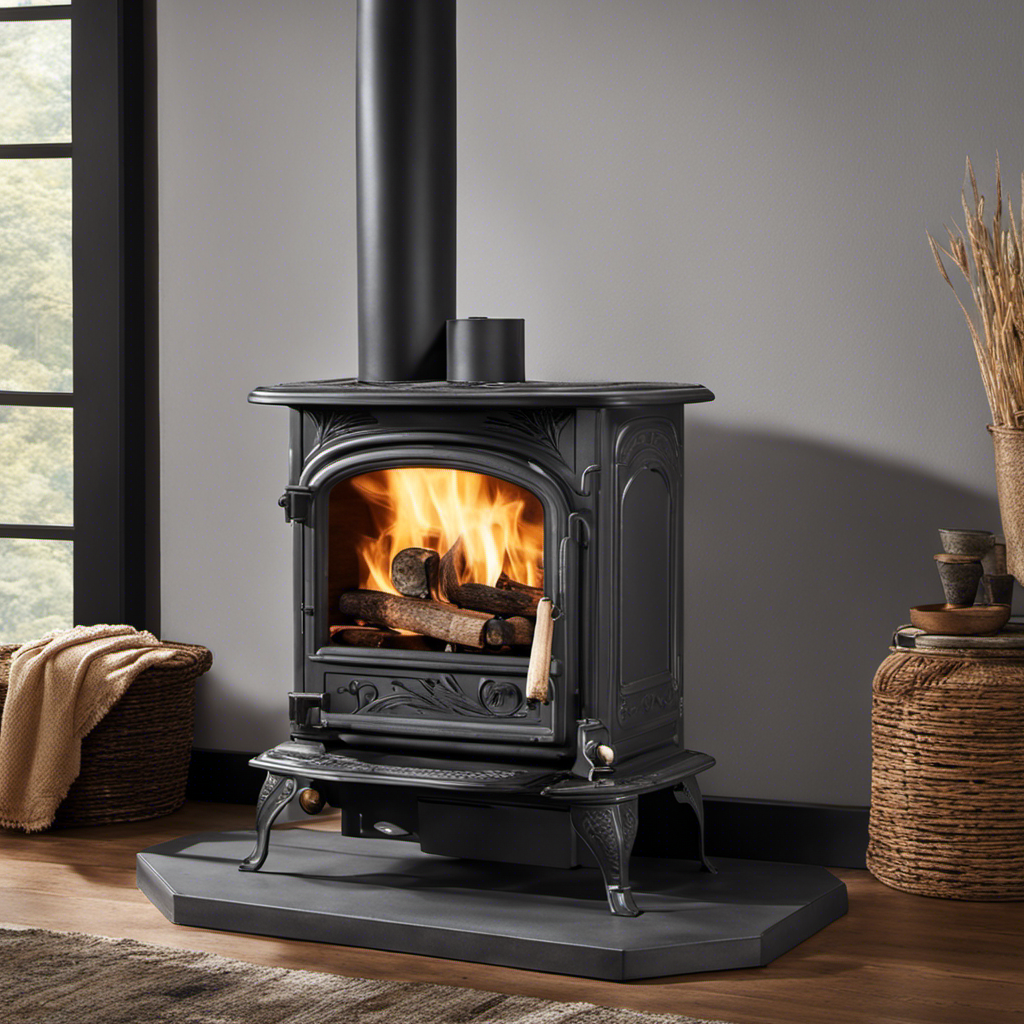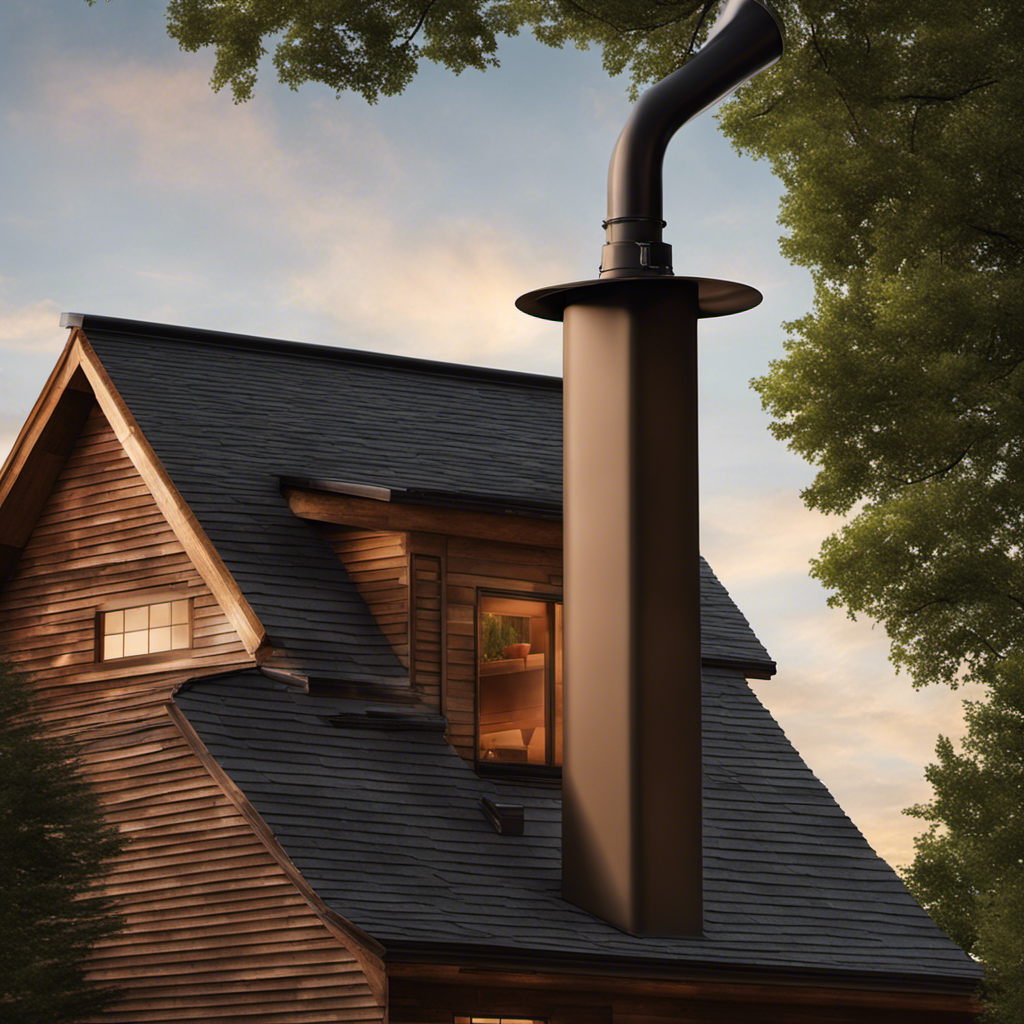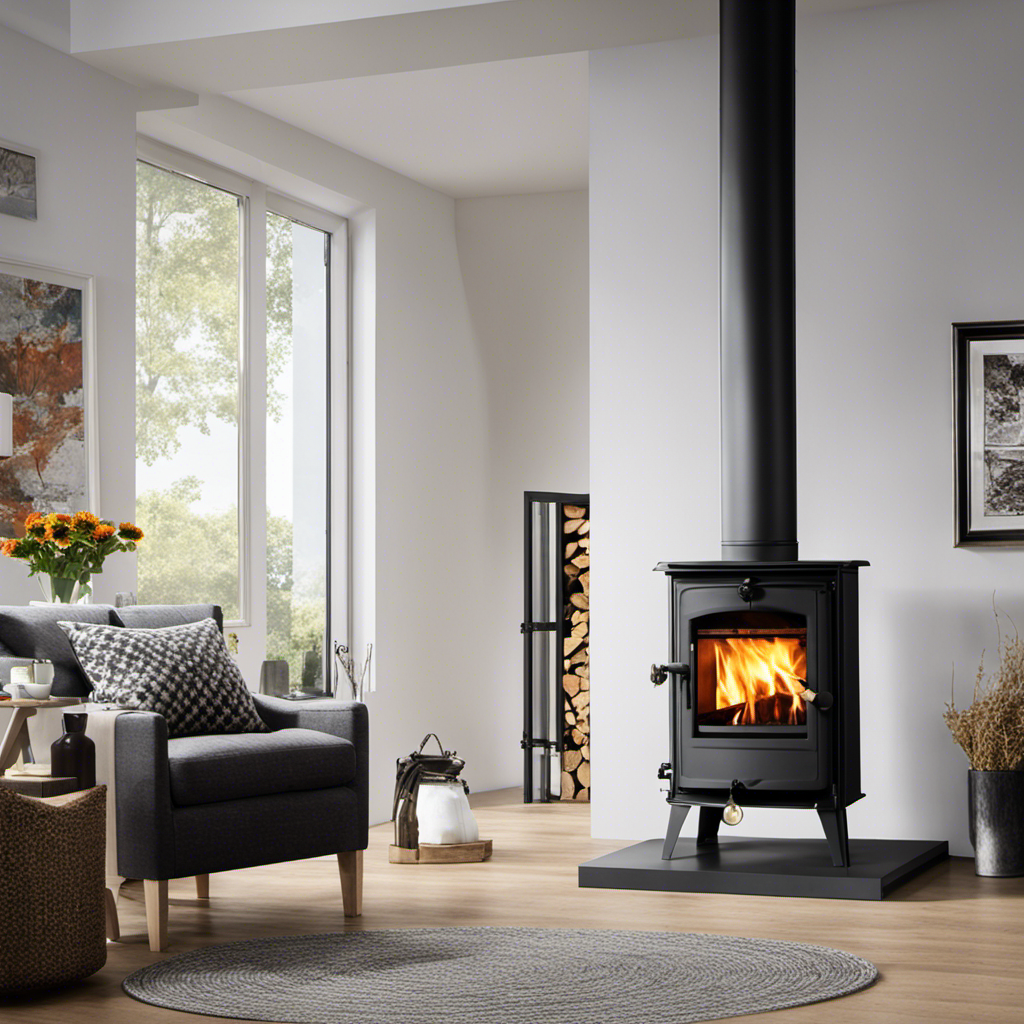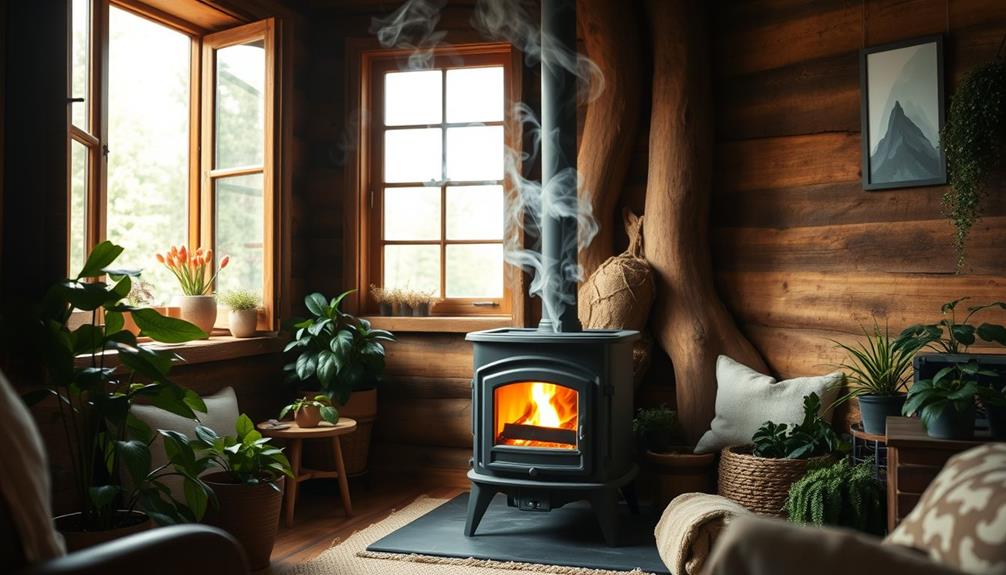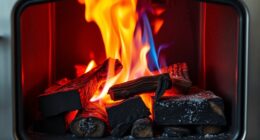After using a wood stove to heat my home, I’ve learned the importance of adhering to safety protocols and ensuring adequate warmth.
Did you know that wood stoves are responsible for over 9,000 residential fires each year?
In this article, I will share my knowledge and experience to help you make informed decisions about using a wood stove.
From choosing the right wood to troubleshooting common issues, I’ve got you covered.
Let’s keep your home warm and safe!
Key Takeaways
- Fire prevention and safety measures are crucial when using a wood stove to heat the house.
- Choosing the right combination of hardwoods and softwoods controls the temperature and efficiency of the heating.
- Regular maintenance and cleaning of the wood stove are essential for optimal performance and safety.
- Utilizing ceiling fans and proper insulation helps distribute the heat evenly throughout the home and improve energy efficiency.
Understanding Wood Stove Safety Measures
I always make sure to follow all the recommended safety measures when using my wood stove. Fire prevention is a top priority, as wood stoves can be a potential fire hazard if not used correctly.
To prevent fires, I ensure that the area around the stove is clear of any flammable materials, such as curtains or furniture. I also regularly clean the stove and chimney to remove any built-up creosote, which can ignite and cause a fire.
Additionally, I’ve installed carbon monoxide detectors in my home to detect any potential leaks. Carbon monoxide is a silent killer, and it’s important to have these detectors to keep my family safe.
Choosing the Right Wood for Efficient Heating
To maximize the efficiency of my wood stove, I carefully select hardwoods and softwoods as the right wood for efficient heating. Different types of firewood have varying heat outputs and burn times. Hardwoods, such as oak and maple, are denser and burn longer, providing a steady source of heat. Softwoods, like pine and fir, ignite quickly and produce a high amount of heat, perfect for quickly warming up the room. By choosing the right combination of hardwoods and softwoods, I can control the temperature in my home and ensure efficient heating throughout the day.
Additionally, proper firewood storage solutions are crucial to maintain the quality of the wood. Storing firewood in a dry area, off the ground, and covered with a tarp helps prevent moisture absorption and ensures the wood burns efficiently.
To maintain and clean my wood stove for optimal performance, regular maintenance is essential.
Maintaining and Cleaning Your Wood Stove for Optimal Performance
Regular maintenance and thorough cleaning are key to ensuring optimal performance of your wood stove. As an experienced wood stove user, I understand the importance of keeping your stove in top condition. Here are some cleaning techniques and chimney maintenance tips that I’ve learned over the years:
- Clean the stove regularly using a soft brush and vacuum cleaner to remove ash and debris.
- Check the gaskets and seals for any signs of wear and tear, and replace them if necessary.
- Inspect the chimney for creosote buildup and schedule regular chimney cleanings to prevent chimney fires.
- Clean the glass door regularly using a non-abrasive cleaner to maintain clear visibility.
- Keep the air vents and flue damper clean and free from any blockages for proper air circulation.
Effective Strategies for Heat Distribution in Your Home
One effective strategy for heat distribution in your home is to use ceiling fans in conjunction with your wood stove. Proper insulation is crucial for maximizing the efficiency of your heating system. By ensuring that your home is properly insulated, you can prevent heat loss and keep the warm air inside. Adding ceiling fans to the equation helps to circulate the heated air throughout the room, creating a more comfortable environment. The movement of the fan helps to distribute the heat evenly, eliminating cold spots and ensuring that every corner of the room receives the warmth. To illustrate the benefits of utilizing ceiling fans, here is a comparison table showcasing the differences in heat distribution with and without the use of ceiling fans:
| Without Ceiling Fans | With Ceiling Fans | |
|---|---|---|
| Heat Coverage | Limited | Evenly distributed |
| Warmth | Concentrated in one area | Spread throughout the room |
| Energy Efficiency | Less efficient | More efficient |
Troubleshooting Common Wood Stove Issues
I can troubleshoot common wood stove issues by checking the fuel supply and ensuring that the damper is open. Wood stove maintenance is crucial for efficient and safe operation. Here are some tips to troubleshoot smoke issues and keep your wood stove running smoothly:
- Clean the chimney regularly to prevent blockages and ensure proper ventilation.
- Check the gasket around the door for any leaks or wear and replace if necessary.
- Inspect the stovepipe for any cracks or damage that may cause smoke to escape.
- Make sure the wood you’re using is properly seasoned to avoid excessive smoke.
- Adjust the air intake to achieve the right balance of combustion and airflow.
Conclusion
In conclusion, using a wood stove to heat your home can be a cost-effective and efficient option. By following proper safety measures, choosing the right wood, maintaining and cleaning your stove, and implementing effective heat distribution strategies, you can enjoy the warmth and comfort of a wood stove.
For example, imagine coming home on a cold winter’s day to a cozy living room, where the crackling fire in your wood stove instantly brings a sense of calm and relaxation.
Logan’s affair with adventure began in childhood. He hailed from a small town where vast forests bordered one side and endless shores stretched on the other. His days were spent exploring uncharted woods, climbing tall trees, or listening to the tales of old sailors. This early immersion in a world brimming with stories and mysteries became the foundation of his passion for writing.

